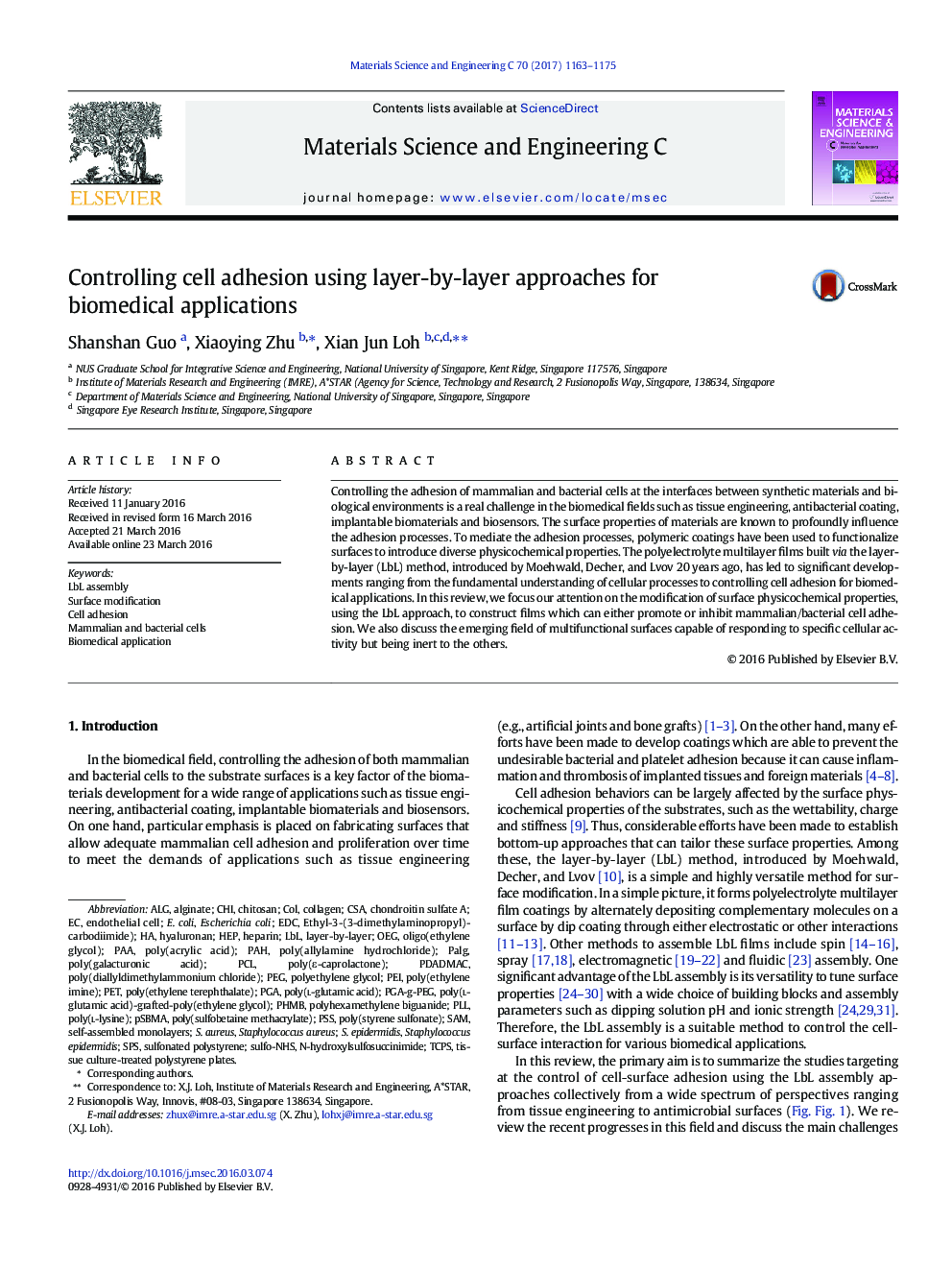| Article ID | Journal | Published Year | Pages | File Type |
|---|---|---|---|---|
| 7866758 | Materials Science and Engineering: C | 2017 | 13 Pages |
Abstract
Controlling the adhesion of mammalian and bacterial cells at the interfaces between synthetic materials and biological environments is a real challenge in the biomedical fields such as tissue engineering, antibacterial coating, implantable biomaterials and biosensors. The surface properties of materials are known to profoundly influence the adhesion processes. To mediate the adhesion processes, polymeric coatings have been used to functionalize surfaces to introduce diverse physicochemical properties. The polyelectrolyte multilayer films built via the layer-by-layer (LbL) method, introduced by Moehwald, Decher, and Lvov 20Â years ago, has led to significant developments ranging from the fundamental understanding of cellular processes to controlling cell adhesion for biomedical applications. In this review, we focus our attention on the modification of surface physicochemical properties, using the LbL approach, to construct films which can either promote or inhibit mammalian/bacterial cell adhesion. We also discuss the emerging field of multifunctional surfaces capable of responding to specific cellular activity but being inert to the others.
Keywords
PEIALGLbLSAMCHIOEGPAAPLLHEPPHMBPSSPAHSPSEDCPCLTCPSPDADMACE. coliSulfo-NHSPSBMAPGAPolyhexamethylene biguanideS. EpidermidisAlginateStaphylococcus aureusS. aureusStaphylococcus epidermidisEscherichia coliSurface modificationOligo(ethylene glycol)CSASelf-assembled monolayersEndothelial cellLayer-by-layerLbL assemblyHeparinHyaluronanPETPoly(l-glutamic acid)poly(diallyldimethylammonium chloride)Poly(sulfobetaine methacrylate)Poly(l-lysine)Poly(ε-caprolactone)Poly(ethylene imine)Poly(ethylene terephthalate)polyethylene glycolSulfonated polystyrenePoly(styrene sulfonate)poly(acrylic acid)poly(allylamine hydrochloride)PEGCell adhesionBiomedical applicationCollagenchondroitin sulfate AcolChitosan
Related Topics
Physical Sciences and Engineering
Materials Science
Biomaterials
Authors
Shanshan Guo, Xiaoying Zhu, Xian Jun Loh,
